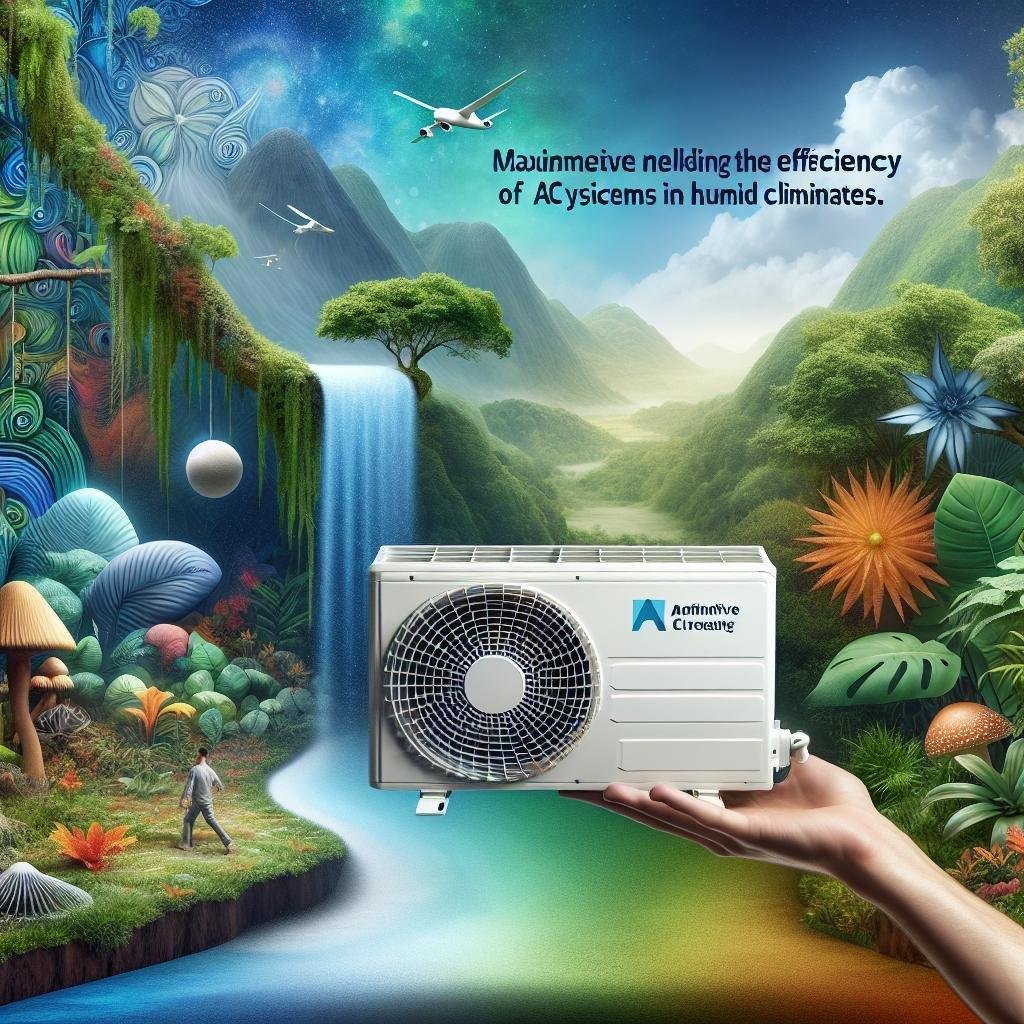As the summer sun blazes overhead and humidity wraps around you like a heavy blanket, the quest for cool, comfortable living spaces becomes an all-consuming mission. Enter the mini split AC system: a modern marvel that promises to deliver optimal comfort with minimal fuss. But, just like any high-tech device, it can only shine when used correctly. Whether you’re a seasoned HVAC enthusiast or a curious homeowner, unlocking the full potential of your mini split AC in humid climates is key to beating the heat without breaking the bank. In this article, we’ll explore creative strategies and friendly tips to enhance your mini split’s efficiency, ensuring it works hard so you can relax easy. Let’s dive into the cool world of climate control and discover how to make your oasis of comfort a reality!
Understanding Humidity: The Key to Optimizing Your Mini Split System
Humidity plays a pivotal role in the performance of your mini split air conditioning system, especially in regions where moisture levels soar. When humidity is high, it’s not just about lowering the temperature—it’s about effectively removing moisture from the air to create a comfortable environment. A mini split system excels in this regard, as it can do more than just cool your living space; it can enhance indoor air quality by dehumidifying as it operates. It’s important to understand your system’s settings, as the right combination of temperature and humidity control will lead to optimal efficiency.
Here are a few strategies to enhance your mini split system’s effectiveness in humid conditions:
- Utilize the Dry Mode: This function is specifically designed to decrease humidity without significantly affecting the temperature.
- Regular Maintenance: Clean and replace filters regularly to ensure maximum airflow and efficiency.
- Strategic Use of Fans: Ceiling fans can help circulate cool air and promote better airflow, complementing your AC system.
| Tip | Description |
|---|---|
| Location | Install units in shaded areas to minimize extra heat absorption. |
| Sealing | Properly insulate and seal ducts to prevent cool air from escaping. |

Selecting the Right Size: Tailoring Your Mini Split for Maximum Comfort
When it comes to mini split AC systems, size truly matters. Selecting the correct capacity for your unit is crucial to ensure optimal performance and comfort. An undersized unit will struggle to cool your space effectively, leading to higher energy bills and constant running. Conversely, an oversized system may cool the area too quickly, resulting in uneven temperatures and increased humidity levels. To avoid these pitfalls, consider the following factors when determining the right size:
- Room Size: Measure the square footage of the space you want to cool.
- Insulation Quality: Well-insulated areas require less cooling capacity.
- Sunlight Exposure: Rooms with direct sunlight may need more power.
- Ceiling Height: Higher ceilings can affect the overall cooling requirement.
To assist you in making an informed decision, here’s a quick reference table outlining the BTU requirements based on room sizes:
| Room Size (Square Feet) | Required BTUs |
|---|---|
| 100 – 300 | 5,000 |
| 300 - 500 | 7,000 |
| 500 – 1,000 | 12,000 |
| 1,000 – 1,200 | 15,000 |
By carefully evaluating these elements, you can pinpoint the appropriate size for your mini split system. This thoughtful approach not only enhances your comfort but also optimizes energy usage, ensuring that you enjoy a cool and refreshing environment even in the most humid conditions.

Maintenance Matters: Simple Steps to Keep Your System Running Smoothly
Keeping your mini split AC system in optimal condition is essential, especially in humid climates where the demand for cooling is high. To ensure it operates efficiently, make it a habit to clean or replace air filters regularly—ideally every month during peak usage. Clogged filters can restrict airflow, causing the system to work harder and use more energy. Additionally, check the outdoor unit for debris and foliage that might obstruct airflow. Giving it a good clean will enhance its performance and longevity.
Another critical aspect to consider is maintaining the condensate drain line. Clogs can lead to water damage and inefficient cooling. You can prevent this by flushing it regularly with a mixture of vinegar and water. Also, ensure the insulation on refrigerant lines is intact; damaged insulation can lead to energy loss and increased humidity levels inside your home. Lastly, consider scheduling annual professional maintenance inspections, as experts can spot potential issues before they escalate, keeping your system humming along smoothly.

Smart Settings: Adjusting Temperature and Fan Speed for Ultimate Efficiency
Getting the most out of your mini split AC system requires a bit of finesse when it comes to temperature and fan speed adjustments. Finding the perfect balance can lead to significant savings on your energy bill while still keeping you comfortable. Start by setting your thermostat to a temperature that feels cool but not overly cold—generally around 75°F (24°C) is a sweet spot for many in humid climates. From there, monitor indoor humidity levels; using a dehumidifier paired with your AC can enhance comfort without forcing the AC to work overtime.
Next, it’s time to tweak the fan speed to optimize airflow. Consider these settings:
- Low Speed: Best for quiet operation during nighttime or when the room is occupied.
- Medium Speed: Ideal for moderate cooling when the humidity levels are moderate.
- High Speed: Effective when you need rapid cooling or are combating high humidity levels.
Experiment with these options to determine what works best for you and your home’s environment. Additionally, modern units may have an auto mode that adjusts settings automatically based on both temperature and humidity, helping you maintain efficiency without constant manual changes.
Q&A
Q&A: Maximizing Efficiency of Mini Split AC Systems in Humid Climates
Q1: What is a mini split AC system, and why is it a good choice for humid climates?
A: Great question! A mini split AC system consists of an outdoor compressor and indoor air handling units, offering flexibility and efficiency. It’s a stellar choice for humid climates because it cools and dehumidifies air simultaneously—essential for keeping your living space comfortable, even when the weather is sultry.
Q2: How can I ensure my mini split AC system is running at peak efficiency?
A: Start by scheduling regular maintenance! Cleaning or replacing filters every month, ensuring the outdoor unit is free of debris, and checking refrigerant levels can do wonders. A well-maintained unit can save you money and extend its lifespan—who doesn’t love that?
Q3: Are there any specific settings or modes I should use in humid conditions?
A: Absolutely! Use the “Dry” mode on your unit if it has one. This function focuses on dehumidification, preventing moisture build-up without overcooling your space. It’s like a gentle breeze on a summer day instead of an icy draft!
Q4: Is there a particular temperature I should set my AC to in humid weather?
A: Ideally, aim for a comfortable 72°F to 75°F (22°C to 24°C). Setting it too low could lead to excessive humidity and it’ll run inefficiently—like trying to squeeze into your favorite jeans post-holidays! Find that sweet spot where you feel comfortable without straining your systems.
Q5: How can proper insulation help with mini split efficiency?
A: Insulation is key in ensuring that the cool air stays in and the humidity stays out. Sealing leaks around windows and doors prevents your AC from overworking. Think of insulation as the cozy winter sweater for your home—keeping warmth in during winter and cool air during summer!
Q6: What about using fans in conjunction with my mini split AC system?
A: Yes, yes, a thousand times yes! Ceiling fans or oscillating fans can help circulate cool air more effectively, allowing you to set your mini split system at a higher temperature while maintaining comfort. It’s like having your very own wind machine without the big Hollywood budget!
Q7: Can landscaping affect my mini split AC system’s efficiency?
A: You bet! Well-placed trees and shrubs can provide shade for the outdoor unit, keeping it cooler and improving efficiency. Just be sure to maintain a clear path for airflow—think of it as giving your AC room to breathe!
Q8: How do I know if my mini split is energy efficient?
A: Look for the SEER (Seasonal Energy Efficiency Ratio) rating! The higher the number, the more efficient the system. In humid climates, you’ll want to aim for a SEER rating of 16 or higher for optimal performance. It’s like shopping for a fuel-efficient car—who wouldn’t want a better bang for their buck, right?
Q9: What’s the biggest mistake people make with their mini split systems in humid areas?
A: One of the most common missteps is neglecting maintenance. Skipping those routine check-ups can lead to subpar performance and higher energy bills. Think of maintenance as a spa day for your AC—it’ll keep feeling fresh and fabulous!
Q10: Any final tips for mastering mini split efficiency in humid climates?
A: Yes! Embrace the power of programmable thermostats and smart technology. They allow you to set schedules, ensuring your mini split operates only when needed. This means waking up to a cool retreat without wasting energy. Prevention is your best friend—stay ahead of the humidity game!
Remember, keeping your mini split AC running efficiently in humid climates is all about clever tweaks and a little TLC. So keep your cool and let those breezy days roll in!
The Conclusion
maximizing the efficiency of your mini split AC system in humid climates isn’t just about staying cool—it’s about creating a comfortable and enjoyable living space that revitalizes your everyday life. By embracing the tips we’ve discussed, such as proper installation, regular maintenance, and smart usage habits, you can transform your home into a refreshing oasis, no matter how sticky the weather outside becomes.
Remember, every small adjustment can lead to big savings—not just on your energy bill, but on your peace of mind as well. So, take charge of your indoor climate, enjoy the bliss of cool air, and let your mini split system work its magic while you savor those lazy summer afternoons. Here’s to staying breezy, efficient, and embracing every moment, rain or shine! Happy cooling!

